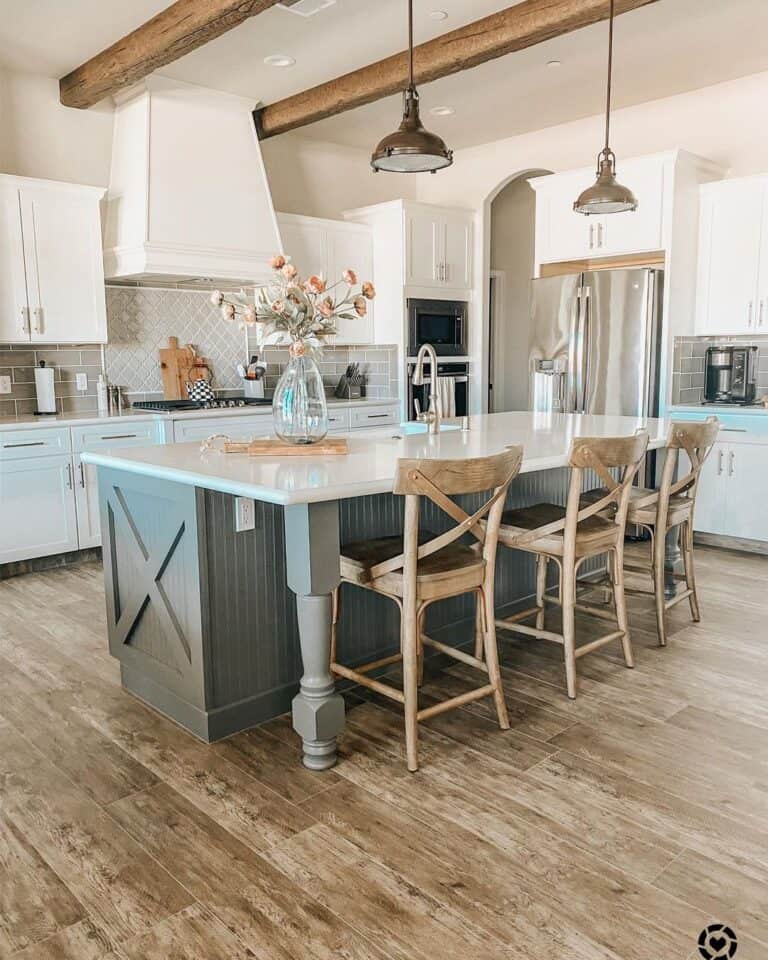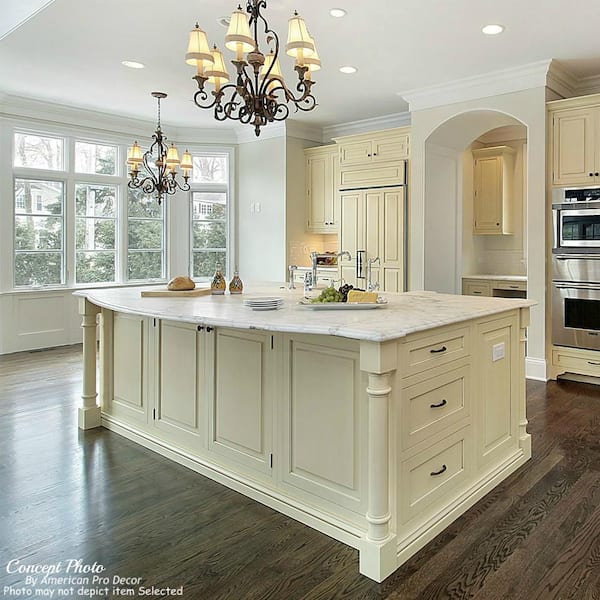Explore Modern and Standard Designs in Legs For Kitchen Island Jobs
Explore Modern and Standard Designs in Legs For Kitchen Island Jobs
Blog Article
Key Considerations for Finding the most effective Legs For Cooking Area Island for Your Layout
When picking the optimal legs for your kitchen island, a number of key factors to consider enter play that can substantially affect both capability and aesthetic appeals. The selection of material, elevation, and style need to align with your total kitchen area layout to make sure a harmonious appearance. Additionally, stability and upkeep demands are crucial for lasting use and simplicity of care. Comprehending these variables can improve your cooking area's practicality and aesthetic appeal, yet the nuances of each consideration can often be ignored. What effects might these options carry your cooking area's overall ambience?
Determine Your Design Preference
Establishing your design choice is critical when selecting the suitable legs for your cooking area island. The legs of your kitchen area island not only serve a practical purpose however likewise contribute considerably to the general aesthetic of the area. Identifying your design style-- be it modern-day, rustic, typical, or commercial-- is necessary.
For a contemporary cooking area, take into consideration sleek, minimalistic legs that enhance open rooms and clean lines. Typical kitchens often prefer turned or elaborate legs, which can add a touch of sophistication and elegance.
In addition, consider the elevation and percentage of the legs in connection with the island's surface area. This ensures the aesthetic balance and performance required for daily use. Assessing the existing elements in your kitchen, such as cabinets and devices, can also assist your choice, ensuring cohesiveness in style. Eventually, your design choice will influence not only the option of legs yet also the overall harmony of your kitchen area's layout.
Select the Right Material
Choosing the best material for your kitchen area island legs is essential in making certain both durability and aesthetic appeal. Various materials offer distinct benefits, and the selection often reflects your layout choices and practical demands.
Wood is a prominent choice, providing heat and convenience. It can be tarnished or repainted to match your kitchen area design, making it adaptable to various designs, from rustic to modern. Wood may call for routine maintenance to maintain its look and stability.

If you look for an one-of-a-kind touch, think about acrylic or glass products. They can create an impression of room and lightness in your kitchen area, making them a superb choice for smaller sized areas - Legs For Kitchen Island. Nevertheless, these alternatives may require cautious handling and upkeep to avoid scratches.
Inevitably, the product you choose should line up with your kitchen area's total layout, ensuring that the legs serve both practical and ornamental objectives.
Take Into Consideration Height and Proportions
When developing a kitchen area island, height and percentages play a vital duty in making certain functionality and convenience. The typical height for a kitchen area island usually ranges from 36 to 42 inches, aligning with conventional counter heights or bar elevations, specifically. This measurement is crucial for balancing with surrounding countertops and feceses, allowing ease of usage throughout meal preparation and social communications.
Furthermore, the island's proportions have to match the overall cooking area format. Think about the proportion between the island's width and size, ensuring it supplies sufficient surface location without crowding the kitchen area.
In addition, the height read the full info here of the legs or base can affect the visual allure and functionality. Taller legs might lend an extra modern, ventilated feeling, while shorter ones can stimulate a conventional, based appearance. Eventually, carefully taking into consideration height and proportions will certainly result in a kitchen area island that is both visually attractive and functionally reliable, enhancing the general style of the room.
Assess Stability and Longevity
A kitchen island's legs need to not just complement its height and percentages yet also offer ample security and resilience to sustain day-to-day tasks. The legs are necessary to the general capability of the island, as they birth the weight of the countertop and any extra tons, such as devices or cooking jobs.
When assessing stability, it is vital to take into consideration the leg layout and material. As an example, sturdy metal or solid hardwood legs typically use remarkable toughness contrasted to lighter products like crafted timber or plastic. Additionally, a bigger base can boost security, lowering the risk of wobbling or tipping during usage.
Toughness is similarly important; the legs need to withstand wear and tear from everyday use. Take into consideration coatings that safeguard versus scratches, dents, and wetness, specifically in a cooking area setting. Evaluate the top quality of building, site link such as joints and fastenings, which can substantially affect the legs' long-term efficiency.
Ultimately, buying well-crafted legs that focus on stability and durability will certainly ensure your cooking area island stays a reputable work area for several years to find, enhancing your cooking experiences while maintaining visual appeal.
Variable in Maintenance and Treatment
Maintenance and treatment are crucial factors to consider for making sure the durability and efficiency of kitchen area island try here legs. When selecting legs, it is necessary to assess the products used, as different alternatives require differing degrees of upkeep. As an example, wood legs might need routine refinishing or sealing to stop moisture damage and scrapes, while steel legs may require normal polishing to preserve their sparkle and avoid corrosion.
Moreover, the surface related to the legs can affect upkeep needs. A high-gloss layer may be less complicated to clean however could show finger prints and scrapes quicker than a matte surface. It is suggested to pick materials and finishes that complement your way of life; for instance, if you often organize celebrations, go with durable products that can hold up against wear and tear.
Additionally, consider the cleaning process involved in maintaining these legs. Smooth surfaces frequently require minimal effort, while intricate designs may accumulate dirt and crud, demanding even more labor-intensive cleansing techniques. Legs For Kitchen Island. Eventually, factoring in the maintenance and care needed for your picked cooking area island legs will certainly not only enhance their aesthetic allure yet likewise ensure their functional integrity over time
Verdict
In verdict, choosing the ideal legs for a kitchen area island necessitates mindful factor to consider of different elements, consisting of layout style, material choice, elevation, upkeep, and stability. Each aspect plays a vital function in ensuring that the legs not just improve the visual charm of the kitchen yet likewise provide the essential support and durability for everyday use. An educated decision will inevitably add to a practical and aesthetically pleasing kitchen area setting.
The legs of your cooking area island not just offer a useful objective but likewise add substantially to the total visual of the space.Upkeep and care are critical factors to consider for ensuring the durability and performance of kitchen area island legs. Wood legs may need routine refinishing or sealing to stop moisture damage and scrapes, while steel legs may require normal polishing to preserve their sparkle and prevent rust.
Inevitably, factoring in the maintenance and care required for your picked kitchen island legs will not just boost their visual appeal however additionally guarantee their functional stability over time.

Report this page